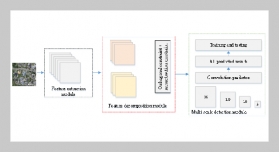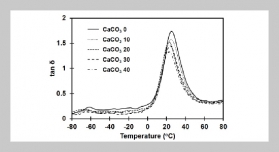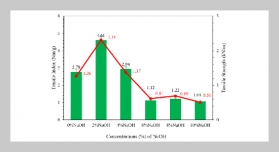REFERENCES
- [1] Zhao, S., Lin, F., Peng, K., Chen, B. M. and Lee, T. H., “Homography-based Vision-aided Inertial Navigation of UAVs in Unknown Environments,” AIAA Guidance, Navigation and Control Conference 1316 August 2012, Minneapolis, Minnesota, National University of Singapore (2012). doi: 10.2514/6.2012-5033
- [2] Sanfourche, M., Delaune, J., Le Besnerais, G., de Plinval, H., Israel, J., Cornic, P., Treil, A., Watanabe, Y. and Plyer, A., “Perception for UAV: Vision-Based Navigation and Environment, Modeling,” Aerospace Lab Journal, pp. 12 (2012).
- [3] Scharstein, D. and Szeliski, R., “A Taxonomy and Evaluation of Dense Two-Frame Stereo Correspondence Algorithms,” International Journal of Computer Vision, Vol. 47, No. 1, pp. 742 (2002).
- [4] Seitz, S., Curless, B., Diebel, J., Scharstein, D. and Szeliski, R., “A Comparison and Evaluation of Multiview Stereo Reconstruction Algorithms,” Computer Vision and Pattern Recognition, 2006 IEEE Computer Society Conference on, IEEE, Vol. 1, pp. 519528 (2006). doi: 10.1109/CVPR.2006.19
- [5] Snavely, N., Seitz, S. and Szeliski, R., “Photo Tourism: Exploring Photo Collections in 3D,” ACM Transactions on Graphics (TOG), ACM, Vol. 25, pp. 835846 (2006).
- [6] Snavely, N., Seitz, S. and Szeliski, R., “Modeling the World from Internet Photo Collections,” International Journal of Computer Vision, Vol. 80, No. 2, pp. 189 210 (2008). doi: 10.1007/s11263-007-0107-3
- [7] Tan, P., Fang, T., Xiao, J., Zhao, P. and Quan, L., “Single Image Tree Modeling,” ACM Trans. Graph., Vol. 27, No. 5, pp. 108:1108:7 (2008).
- [8] Xiao, J., Chen, J., Yeung, D.-Y. and Quan, L., “Learning Two-view Stereo Matching,” Proceedings of the 10th European Conference on Computer Vision: Part III, ECCV ’08, Berlin, Heidelberg, pp. 1527 (2008).
- [9] Xiao, J., Fang, T., Tan, P., Zhao, P., Ofek, E. and Quan, L., “Image-based Facade Modeling,” ACM Trans. Graph., Vol. 27, No. 5, pp. 161:1161:10 (2008).
- [10] Xiao, J., Fang, T., Zhao, P., Lhuillier, M. and Quan, L., “Image Based Street-side City Modeling,” ACM SIGGRAPH Asia 2009 Papers, SIGGRAPH Asia ’09, New York, NY, USA, pp. 114:1114:12 (2009).
- [11] Kanade, T., Yoshida, A., Oda, K., Kano, H. and Tanaka, M., “A Stereo Machine for Video-rate Dense Depth Mapping and its New Applications,” Proc. of CVPR’96 (1996). doi: 10.1109/CVPR.1996.517074
- [12] Konolige, K., “Small Vision Systems: Hardware and Implementation,” Proc. of 8th International Symposium on Robotics Research (1997).
- [13] Marques, O., Practical Image and Video Processing, Hoboken, NJ: John Wiley & Sons (2011).
- [14] Georgantzoglou, A., da Silva, J. and Jena, R., Image Processing with MATLAB and GPU, MATLAB Applications for the Practical Engineer, Mr Kelly Bennett (Ed.), ISBN: 978-953-51-1719-3, InTech (2014). doi: 10.5772/58300
- [15] Digital Image Processing Using MATLAB’ 2015. Presentation, Haris Papasaika-Hanusch, Institute of Geodesy and Photogrammetry, ETH Zurich.
- [16] Otsu, N., “A Threshold Selection Method from GrayLevel Histograms,” IEEE Transactions on Systems, Man and Cybernetics, Vol. SMC-9, No. 1, pp. 6266 (1979). doi: 10.1109/TSMC.1979.4310076
- [17] Sridhar, S., Digital Image Processing, New Delhi: Oxford University Press (2011).
- [18] Sun, W., Yang, X., Xiao, S. and Hu, W., “Robust Recognition of Checkerboard Pattern for Deformable Surface Matching In Multiple Views,” High Performance Computing & Simulation Conference, Shanghai, China: Print. ISBN: 978-0-9553018-7-2 (2008).
- [19] The MathWorks Inc. MATLAB 7.0 (R14SP2). The MathWorks Inc. (2005).
- [20] The MathWorks, Inc., “Image Processing Toolbox Documentation,” The MathWorks, Inc. (2015). [Online]. Available: http://www.mathworks.co.uk/help/images/ [Accessed 25 Jan 2015].
- [21] The MathWorks, Inc., “Computer Vision System Toolbox - MATLAB & Simulink,” The MathWorks, Inc. (2015). [Online] http://www.mathworks.com/products/ computer-vision/?refresh=true [Accessed 21 Dec 2014].
- [22] The MathWorks, Inc., “Single Camera Calibration App - MATLAB & Simulink,” The MathWorks, Inc. (2015). [Online] http://www.mathworks.com/help/vision/ug/ single-camera-calibrator-app.html [Accessed 1 Feb 2014].
- [23] The MathWorks, Inc., “Calibrate A Single or Stereo Camera - MATLAB - Estimatecameraparameters,” The MathWorks, Inc. (2015). [Online]. http://www.math works.com/help/vision/ref/estimatecameraparameters. html [Accessed 22 Jan 2014].
- [24] The MathWorks, Inc., “Object for Storing Camera Parameters - MATLAB,” The MathWorks, Inc. (2015). [Online] http://www.mathworks.com/help/vision/ref/ cameraparameters-class.html [Accessed 1 Feb 2014].
- [25] The MathWorks, Inc., “Compute Location of Calibrated Camera - MATLAB Extrinsics,” The MathWorks, Inc. (2015). [Online] http://www.mathworks.com/help/ 2014].
- [26] The MathWorks, Inc., “Camera Workion Matrix - MATLAB Cameramatrix,” The MathWorks, Inc. (2015). [Online] http://www.mathworks.com/help/vision/ref/ cameramatrix.html [Accessed 5 Feb 2014].
- [27] Hartley, R. and Zisserman, A., Multiple View Geometry in Computer Vision., Second Edition. Cambridge (2000).
- [28] Bardley, D. and Li, B., 3D Reconstruction Using the Direct Linear Transform with a Gabor Wavelet Based Correspondence Measure (2015).
- [29] Stückler, J. and Cremers, D., Visual SLAM, Computer Vision Group, Technische Universität München [Online] https://vision.in.tum.de/research/vslam [Accessed 3 December 2015].
- [30] Shultz, T. and Rodriguez, L., “3D Reconstruction from Two 2D Images,” ECE533 Digital Image Processing, University of Wisconsin-Madison [Online] http://home pages.cae.wisc.edu/~ece533/work/f03/shultzrodriguez. pdf [Accessed 3 December 2015].
![Comparison of feature-based and direct 3D reconstruction scheme [29]. Development of 3D Feature Detection and on Board Mapping Algorithm from Video Camera for Navigation](/images/article_images/19/19_1_04.jpg)








